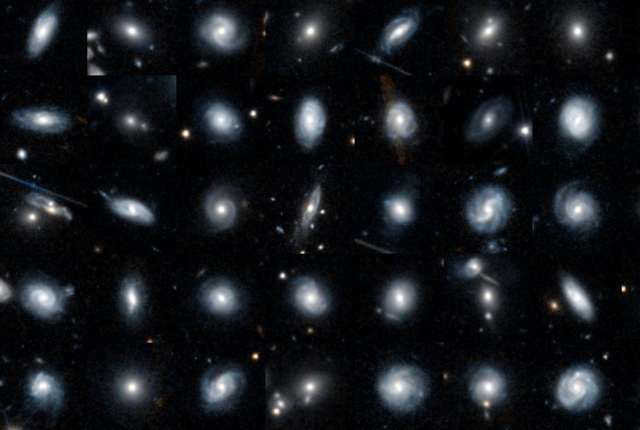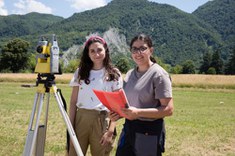What shape is that galaxy? Euclid is looking for volunteers to study the Universe

Images of galaxies of various shapes, observed with Euclid (Credits: Esa/Euclid/Euclid Consortium/Nasa, CC BY-SA 3.0 IGO or ESA Standard Licence)
A game, a challenge, or even a summer hobby – but with a noble goal: helping researchers identify the shape of millions of galaxies observed by Euclid, the European Space Agency (ESA)’s new telescope, which studies the ‘dark side’ of the Universe.
This is the new initiative launched together with Galaxy Zoo, one of the most famous citizen science projects in the world. The first set of data collected by Euclid – which includes tens of thousands of galaxies selected from more than 800,000 images – is now available on Zooniverse. On this platform, the AI algorithm ZooBot, developed by the Zooniverse team, analyses galaxies assigning a label to those that are ‘easier’ to classify, of which we already have several examples from previous surveys. But sometimes, due to the presence of complex or too faint structures in the image, ZooBot may be unsure about the classification of a galaxy – then, GalaxyZoo users come to the rescue, helping ZooBot improve its work.
Each citizen scientist helping the Euclid team classify the shape of galaxies on Galaxy Zoo will have the chance to admire a myriad of unreleased images, and might even be the first human to lay eyes on the image of a particular galaxy.
On the platform, volunteers will receive a set of questions alongside the images, such as ‘Is this galaxy round?’ or ‘Are there signs of spiral arms?’ Once instructed on these human classifications, ZooBot will be included among Euclid’s catalogues to classify in detail hundreds of millions of galaxies and thus contribute to creating the largest scientific catalogue ever produced.
Indeed, Euclid will record hundreds of thousands of galaxies in its mission to map the Universe. Following its launch on the first of July 2023, Euclid is expected to transmit to the Earth about 100 gigabytes of data per day in the following six years.
Galaxy Zoo was launched in 2007 by a team of astronomers who asked the public for help in classifying the shape of a million galaxies captured in the images of the Sloan Digital Sky Survey. In the past 17 years, it has grown, involving more than 400,000 people, expanding the pool of galaxies to be observed with images coming from other observatories, both on the ground and in orbit, such as the space telescopes Hubble and Jwst. Of course, Euclid could not be left out either.
Built and managed by the European Space Agency (ESA), Euclid was born with the contribution of NASA and in collaboration with the Italian Space Agency (ASI), the Italian National Institute for Astrophysics (INAF), the National Institute for Nuclear Physics (INFN) and many Italian universities, including the University of Bologna. With its Department of Physics and Astronomy ‘Augusto Righi’ (DIFA), our university was among the creators and founders of the mission.






